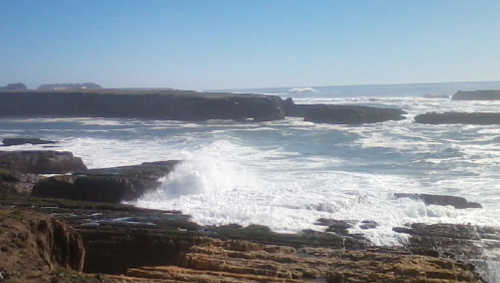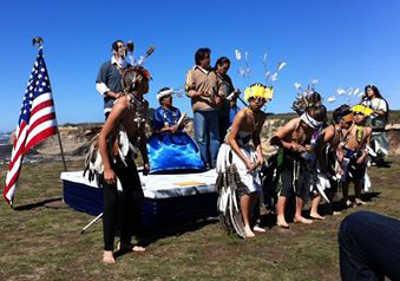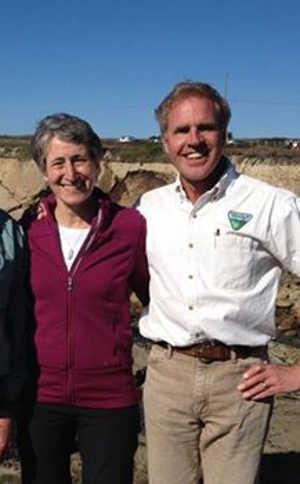- Mary K. Hanson
- Posted On
Tuleyome Tales: The long and short of it – blue and green herons
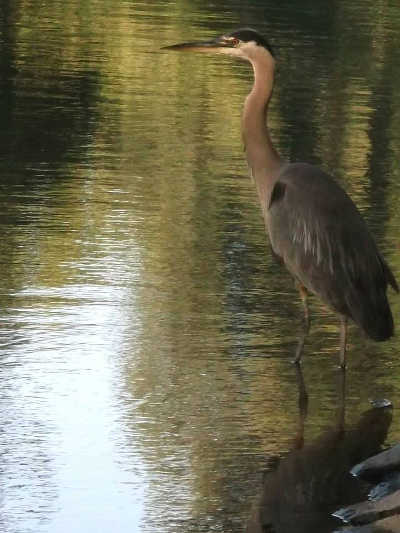
Two of the most common herons in the local region are the great blue heron (Ardea Herodias), the largest heron in the United States standing about 4-feet tall with a 6-foot wingspan, and the green heron (Butorides virescens) the smallest of the herons standing only about 18-inches tall, about the size of a crow.
Finding them is relatively easy since they both like ponds, the margins of rivers, irrigation canals and flooded fields – and taking photos and video of them is a lot of fun.
Aside from their stately size, the great blue herons are easily recognizable by their plumage which is generally a dark gray-lavender overall streaked on the breast with black, white and rust.
The heron’s face is usually white, with a black stripe leading from its yellow eyes to the longer plumage at the back of the head.
When breeding, the blues sport longer plumes on their backs, breasts and upper thighs, their lower legs look more orange, and the rim around the bill turns blue. March is one of the best months to see them all decked out in their mating attire.
In California, the great blue herons are nonmigratory, and prefer to roost above ground in tall trees during the night.
The females build nests out of twigs provided by the males, and can lay up to 8 eggs in a clutch. Both parents incubate the eggs and provide for their hatchlings.
The babies can fly when they’re about 2 months old. These herons generally live about 10 years, but some have been known up to 23 years.
Although they are expert fishermen and primarily eat fish, crustaceans, insects and amphibians, great blue herons will eat just about anything they can catch, including other smaller birds and rodents.
Their basic fishing and capturing technique consists of a slow, almost motionless stance, and then a sharp stab with their bill which impales the prey.
The much smaller green heron is a little more sophisticated hunter. It’s one of the few birds that uses “lures” like feathers, bugs, or berries to attract fish.
It pitches its “bait” out onto the surface of the water, and then waits for something come by and snap at it. If the bait drifts, the heron will run along the bank looking for an opportunity to regain it. I actually saw a green heron at a local pond use discarded Cheetos as his “bait” for the small fish in the pond.
Hah! They prefer a diet of fish, but will also eat bugs, snails, reptiles, spiders and smaller rodents when they can catch them.
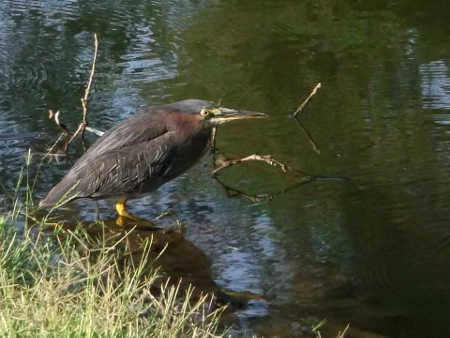
At a distance, green herons look more chestnut brown than green, and it’s only when you get close that you can see the dark green sheen on its back, wing and top-knot feathers.
During mating season, or when startled by trespassers, the Heron will lift the long feathers on its head in display.
Breeding usually takes place between March and July. The male selects the nesting site but, like the male great blue heron, leaves the construction of the nest to the female.
She usually lays about three to five pale blue or greenish eggs, and both she and her mate care for their young until they’re fledged (in about a month). Green herons can live up to seven years, although a shorter lifespan is more common.
The green heron’s numbers in the United States have declined about 2 percent every year (an accumulated drop of about 53 percent between 1966 and 2010). They’re not on any “high concern” list yet, but their numbers are being watched regularly. The biggest threat to them is the loss of habitat through the draining and development of wetland areas.
When you go out hiking in the region, take your camera with you, and keep an eye out for these two beauties. Their distinct coloring and waterside antics always make for great photo-taking opportunities.
Tuleyome Tales is a monthly publication of Tuleyome, conservation organization with offices in Woodland and Napa, Calif. Mary K. Hanson is an amateur naturalist and photographer who is currently serves as executive assistant to Tuleyome’s executive director. For more information about Tuleyome, go to www.tuleyome.org . All photographs are by Mary K. Hanson; used with permission.




